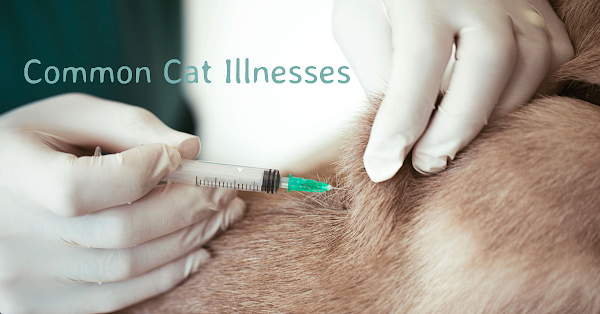Common Cat Illnesses: Recognizing and Managing Symptoms
Introduction:
Cats are beloved companions that bring joy and warmth to our lives. However, like any living being, cats can sometimes fall ill. As a cat owner, it's essential to be aware of common cat illnesses, their symptoms, and how to manage them. In this blog post, we will explore some of the most prevalent cat illnesses, help you recognize their symptoms, and provide guidance on how to effectively manage your cat's health.
1. Upper Respiratory Infections:
Upper respiratory infections are common in cats and can cause symptoms such as sneezing, coughing, nasal discharge, and watery eyes. These infections are often caused by viruses and can be managed with proper veterinary care, supportive treatments, and ensuring your cat's comfort and hydration.
2. Urinary Tract Infections:
Urinary tract infections can affect cats of all ages and genders. Common symptoms include frequent urination, straining in the litter box, blood in the urine, and urinating outside the litter box. Prompt veterinary attention is crucial to diagnose and treat urinary tract infections, which may involve medications, dietary changes, and ensuring proper hydration.
3. Dental Disease:
Dental disease is prevalent in cats and can lead to pain, difficulty eating, and oral infections. Signs of dental disease include bad breath, tartar buildup, swollen gums, and reluctance to eat. Regular dental care, including professional cleanings and at-home brushing, can help prevent and manage dental issues in cats.
4. Gastrointestinal Disorders:
Cats can experience various gastrointestinal disorders, such as gastritis, diarrhea, and vomiting. These conditions can be caused by infections, dietary changes, or underlying health issues. It's important to monitor your cat's bowel movements, look for signs of distress, and seek veterinary advice if symptoms persist or worsen.
5. Parasites:
Parasites, such as fleas, ticks, and worms, can infest cats and cause discomfort and health problems. Regular preventive treatments, including flea and tick control and deworming, are essential to keep your cat protected from these parasites. If you notice signs of infestation, consult with your veterinarian for appropriate treatment options.
6. Chronic Conditions:
Some cats may develop chronic conditions, such as diabetes, kidney disease, or hyperthyroidism. These conditions require long-term management and veterinary care. Working closely with your veterinarian, following prescribed treatments, and providing a suitable diet and environment can help improve your cat's quality of life.
Conclusion
Being familiar with common cat illnesses, recognizing their symptoms, and seeking timely veterinary care are essential for ensuring your cat's health and well-being. By staying vigilant, maintaining regular veterinary check-ups, providing a balanced diet, and creating a safe and comfortable environment, you can help prevent and manage common cat illnesses, allowing your feline friend to lead a happy and healthy life.

Post a Comment